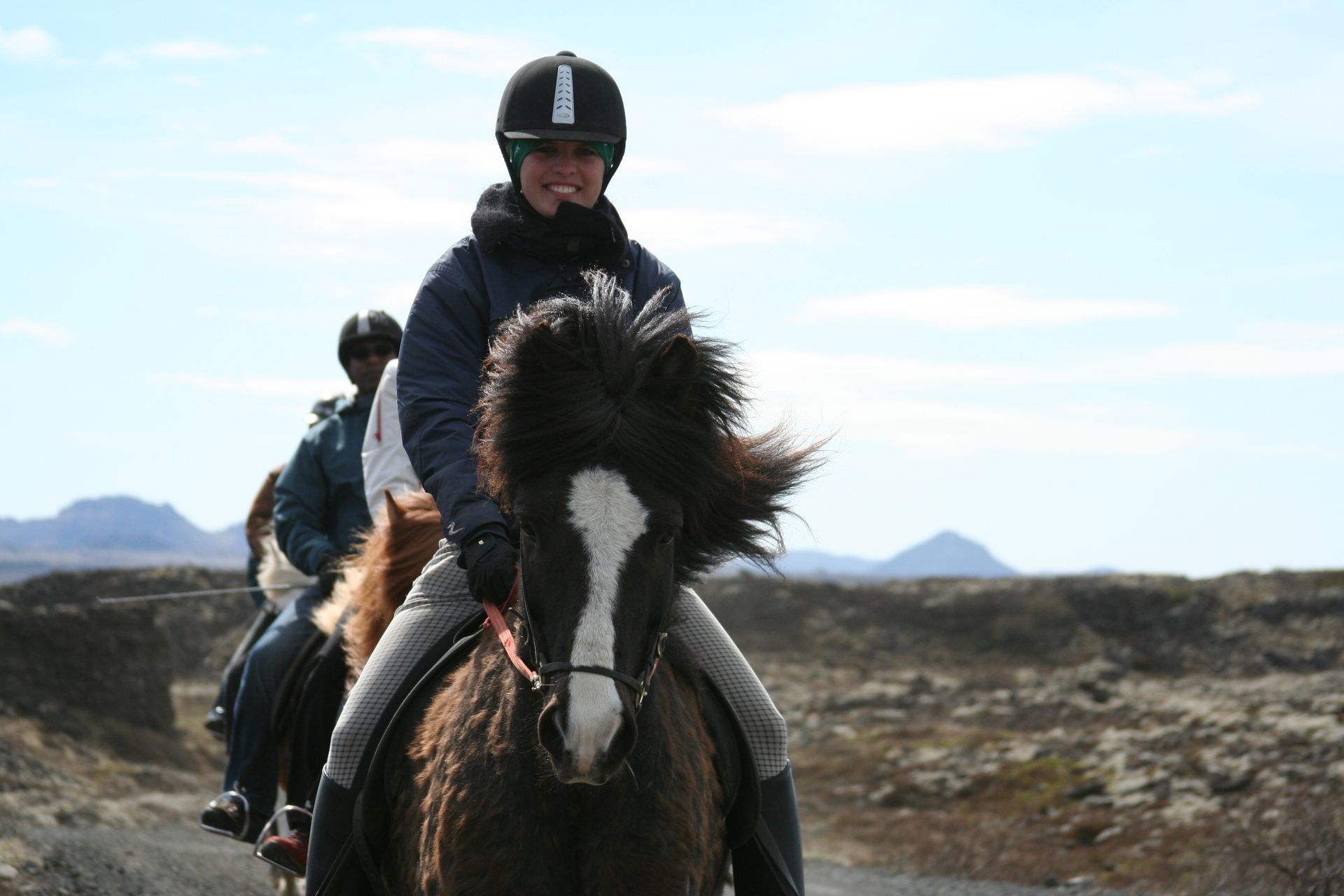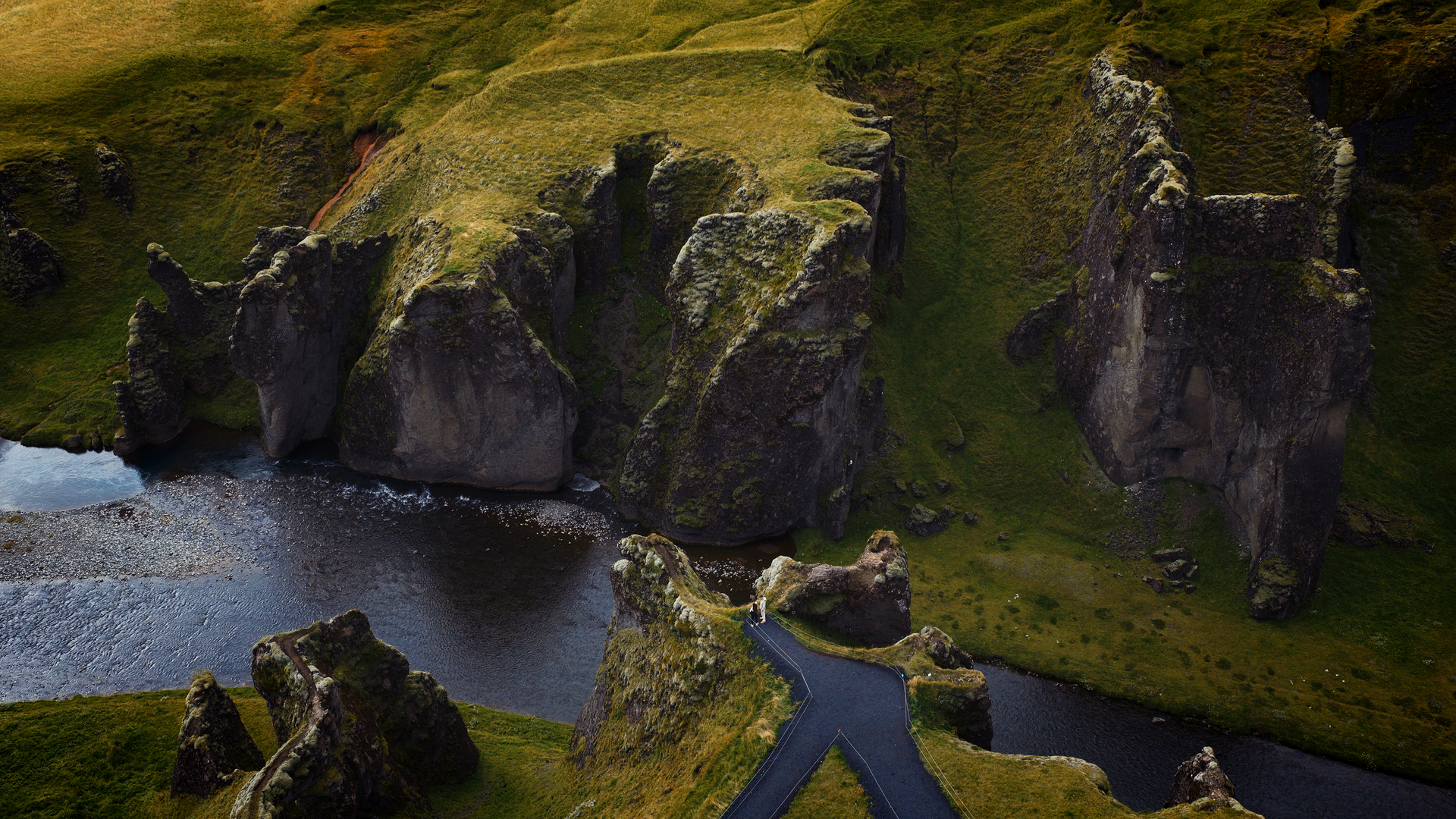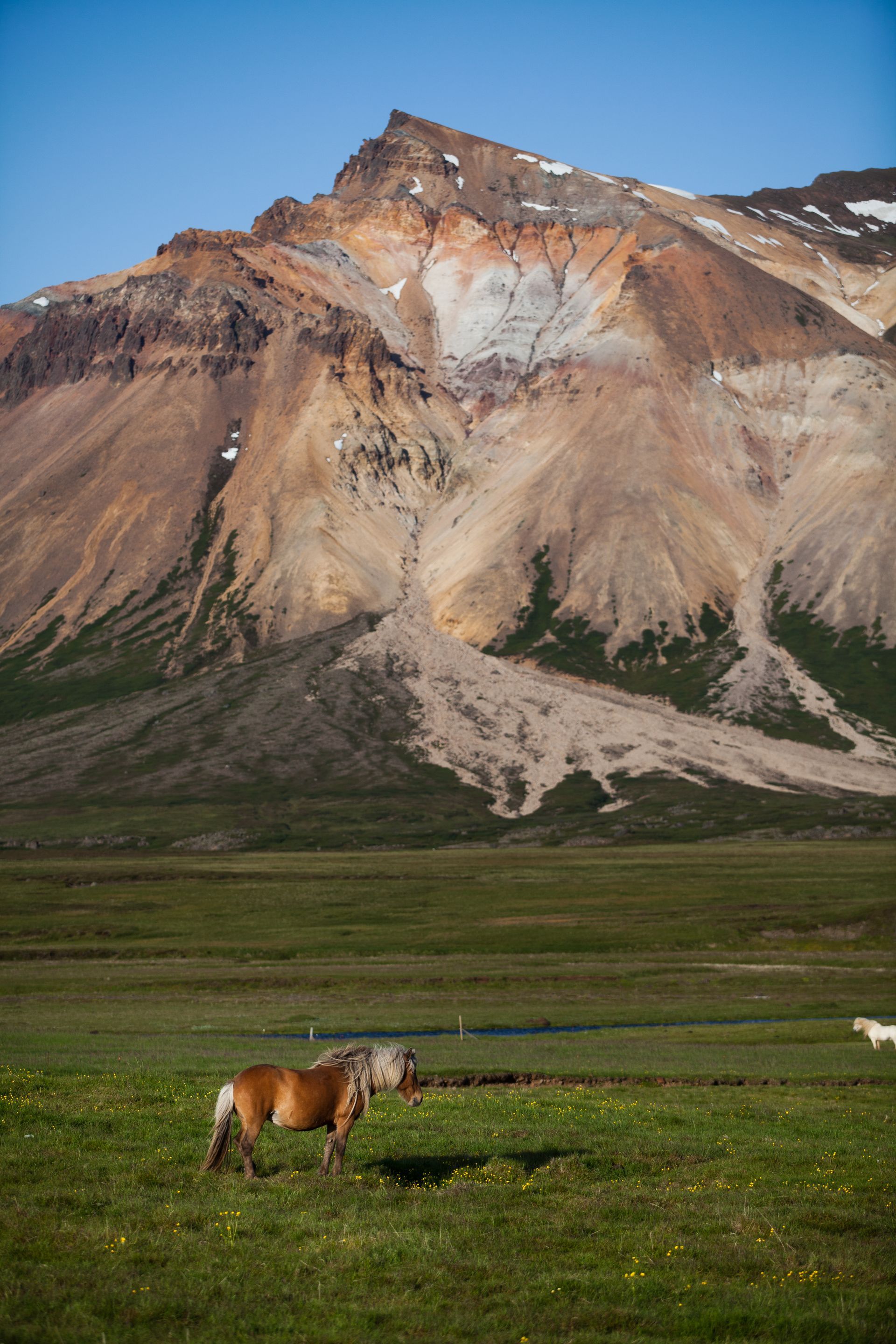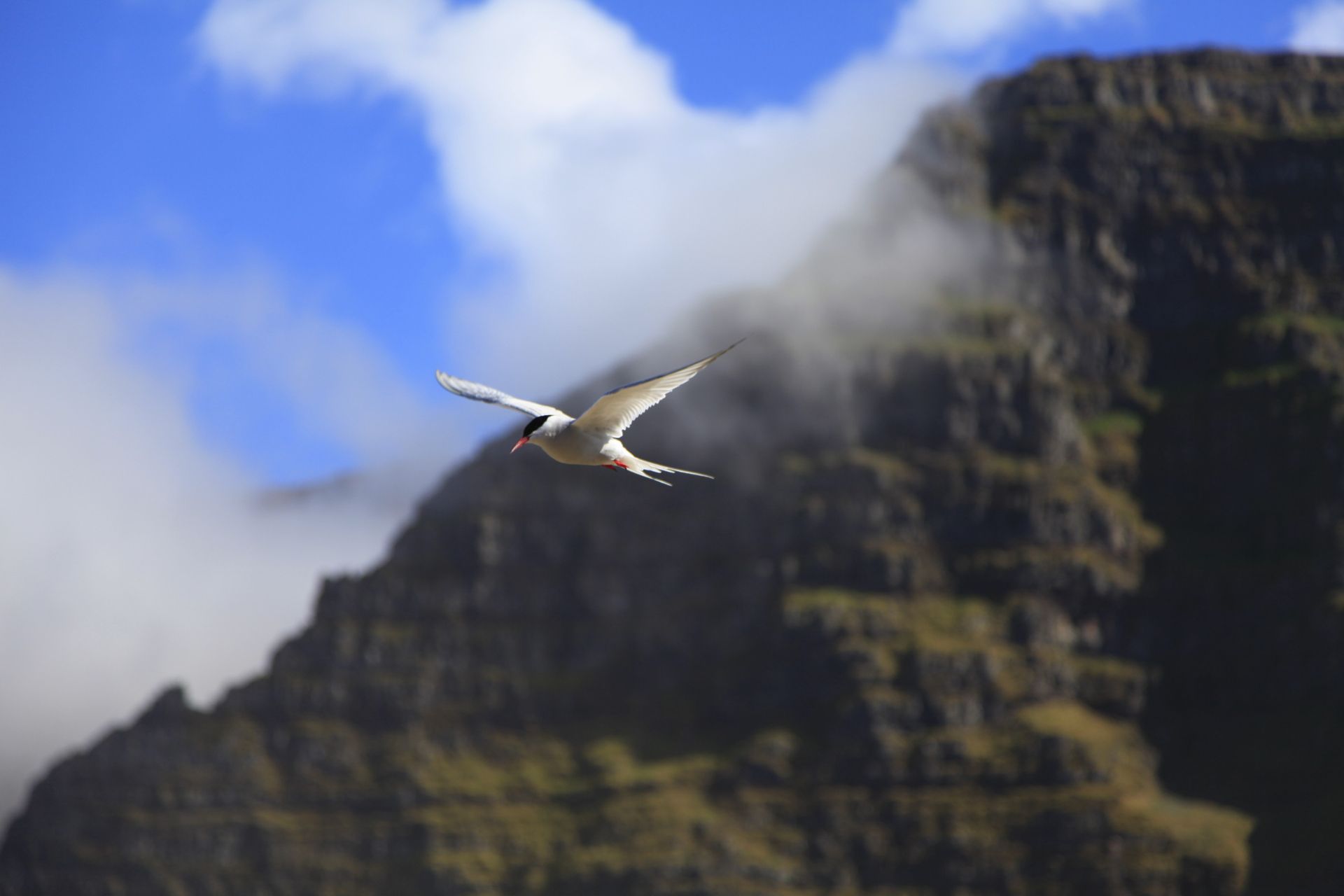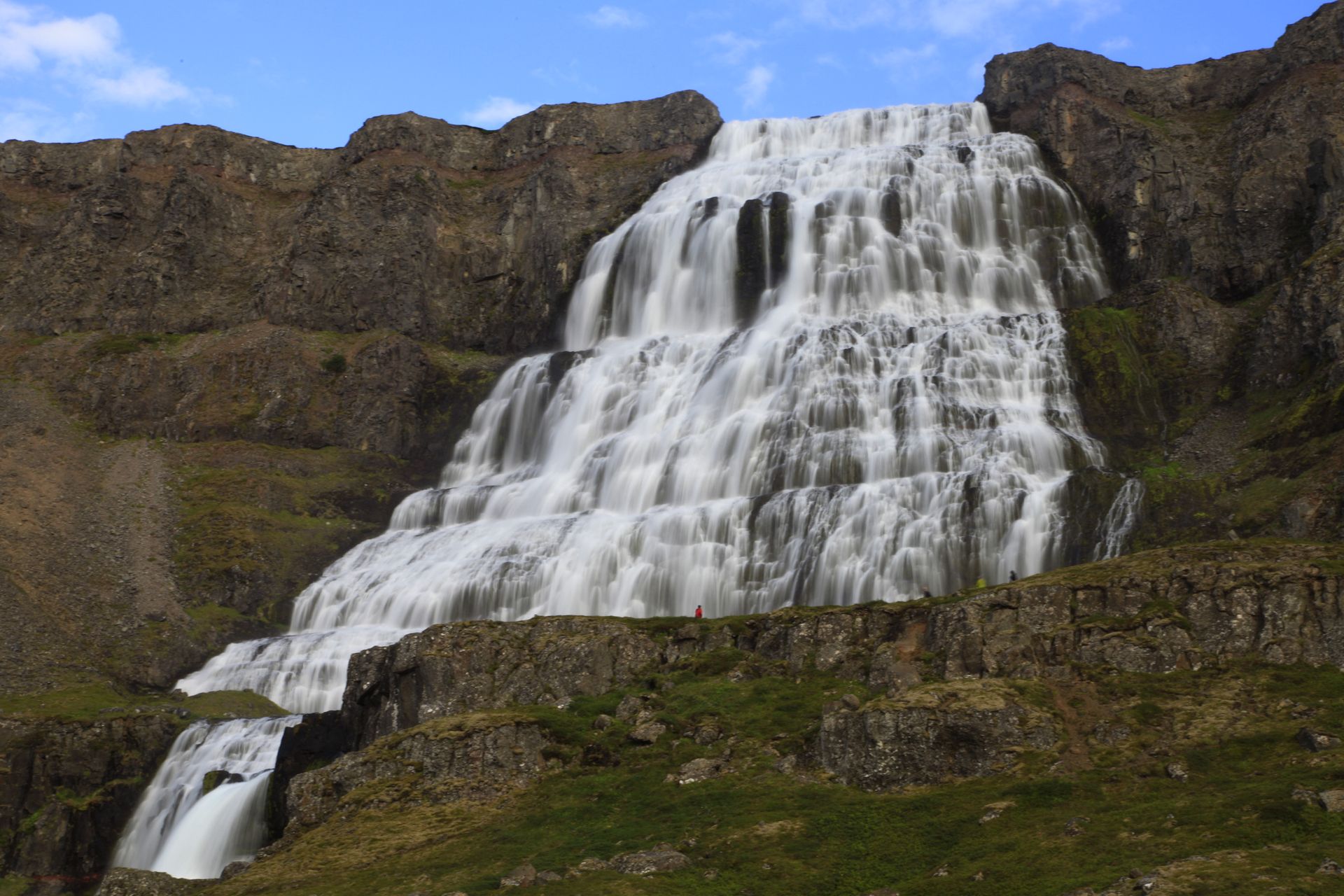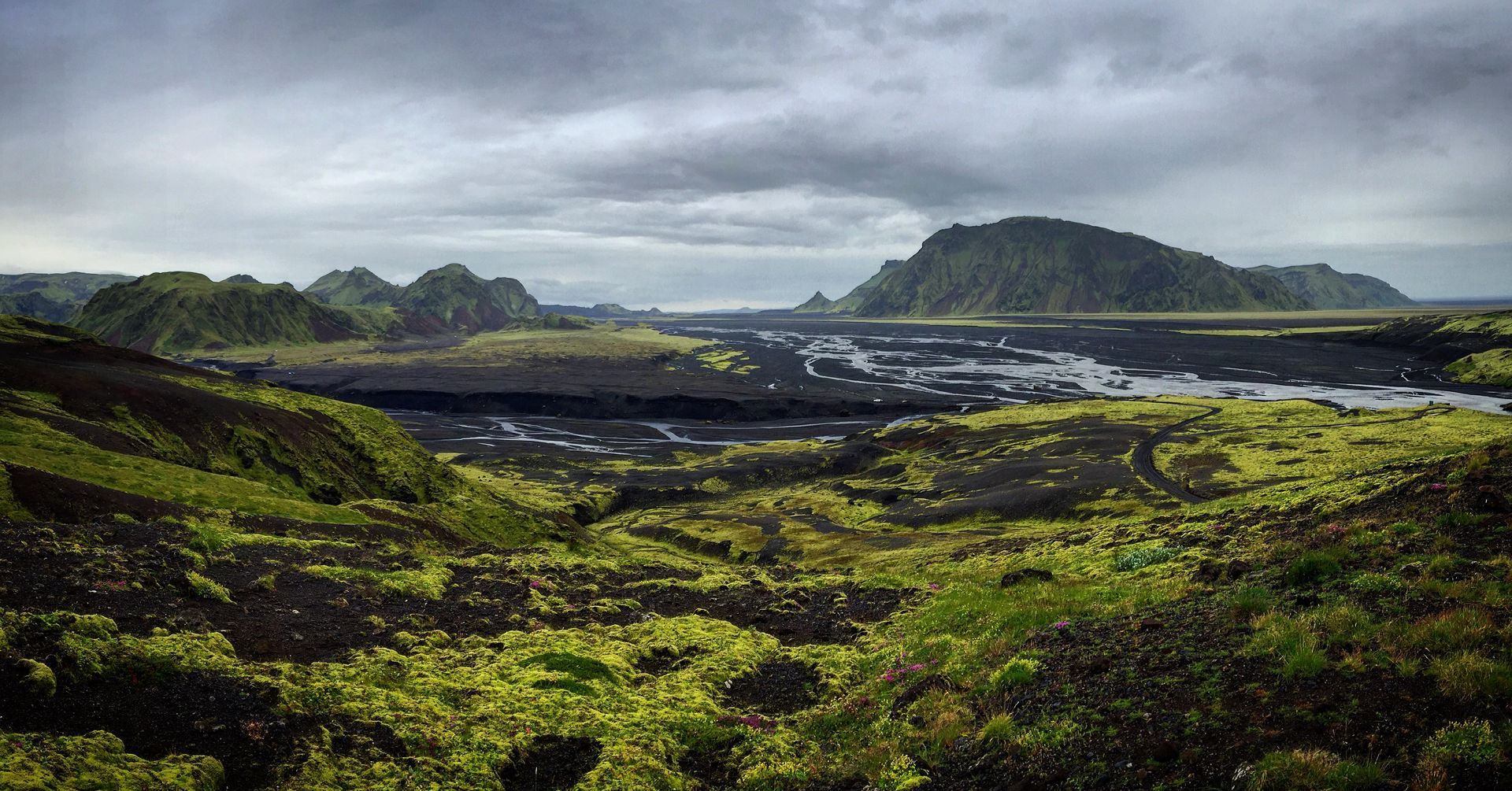Magical Places you don´t want to miss in Iceland
Iceland is truly the land of fairytales. When it’s cladded in snow in wintertime it’s like a winter wonderland, and the midnight sun during summer bathes everything in a golden and pink hue. So, it’s easy to find stunning locations that feel truly magical. What’s hardest is choosing between which ones to go see! Here’s a handful of attractions around the country, each one popular for a good reason.
The Golden Circle
There are several incredible attractions in the southwest of Iceland that are close to each other and also close to the capital city Reykjavík. They are often visited on one trip, on a circular day drive from the city, and this circular route is aptly named The Golden Circle. The route gets its name from one of the attractions, Gullfoss, or the Golden Waterfall. This is undoubtedly one of the most impressive waterfalls in the country, but there are several other contenders listed below. Gullfoss is a two-tiered waterfall that’s very voluminous and picturesque, and you’re quite likely to catch a rainbow over it because of all the spray it gives off. (Pro tip: Bring a rainproof jacket!)
Only a short drive from Gullfoss is the Geysir geothermal area, where there are several hot springs and mud pools of different sizes and shapes. The most popular one is the geyser Strokkur which erupts every few minutes, each time around 60-130 feet (18-40 meters) high. Geysers of the world got their name from Iceland’s Geysir, which unfortunately doesn’t erupt anymore, but is still a sight to behold.
The third destination on the Golden Circle is the Þingvellir National Park, which translates to Parliamentary Fields. This national park is a UNESCO heritage site and contains the largest lake in the country, Þingvallavatn. Its crystal-clear waters have made it a popular snorkel and scuba destination. Þingvellir is both important historically as well as geologically. It’s where the Icelandic parliament gathered for hundreds of years and it also sits right on top of two tectonic plates, with visitors being able to see the rift between the plates on land. It’s one of very few places in the world where you can see the tectonic plates meet on land, as they mostly meet underwater. There’s a well-maintained path down one of the largest cracks, named Almannagjá, and another impressive waterfall, Öxarárfoss, cascades down into it.
The Golden Circle is the most visited day tour in Iceland, for a good reason. There are going to be plenty of other travelers about, but if you want to escape the crowds then you can explore the areas in the evenings during summertime, when it doesn’t get dark anyway and get the places mostly to yourself.
The Diamond Circle
If you’re traveling in the north of Iceland, there’s another 155-mile (250km) circle to drive there, named the Diamond Circle. This route includes many of the must-see magical destinations in the area. A good place to start the circle is either from the largest town in the north of Iceland, Akureyri, or the town Húsavík which is about 50 miles (80km) further north. Húsavík is nestled by the ocean, a colorful and cute seaside village that’s known as the whale watching capital of Iceland. A recent claim to fame was when Húsavík was featured in the Hollywood film Eurovision Song Contest: The Story of Fire Saga, and its song Húsavik (My Hometown) received a nomination for Best Original Song at the Academy Awards.
Húsavík is also home to GeoSea Geothermal Sea Baths, which offer a fantastic view over the bay. What could be more magical than enjoying a drink from the swim-in bar whilst admiring the Northern Lights dancing above?
Further north is the lush and forested Ásbyrgi canyon, that’s shaped like a horseshoe. Forests are a rare sight in Iceland, so this canyon is somewhat of a rarity. It also contains a small lake, and the location is steeped in mythology. Ásbyrgi is said to have been shaped by one of Sleipnir’s hooves, the horse of Odin from the Old Norse religion. It’s not hard to let your imagination run wild in such a beautiful location as this one.
Hljóðaklettar and Rauðhólar is the next stop, a row of impressive rock formations and craters that are dotted along a glacial river. There are a variety of hiking routes to choose from in the area to suit all needs so you can fully appreciate the red color of Rauðhólar and the peculiar formations of Hljóðaklettar.
Dettifoss waterfall is Iceland’s most thunderous waterfall. The sheer force and volume of water that plummets down this magnificent waterfall will leave you in awe. Dettifoss also has a claim to fame in a Hollywood movie, as it was heavily featured in the opening scene of the film Prometheus.
The next stop features water in a different form. At the geothermal area Námaskarð there are several bubbling mud pools and hot springs, with water hissing and steam rising from colorful muddy ground in every direction.
On the other side of a hill you’ll encounter Lake Mývatn, a stunning lake in the north of Iceland. The area surrounding Lake Mývatn is filled with geological wonders, from the steaming hot ground to impressive volcanic craters and intriguing lava formations. Dimmuborgir, which translates to The Dark Cities, is an area that includes fantastic lava formations, full of accessible hiking trails. Mt Hverfjall is an impressive and large, black crater that visitors can hike up to and walk along its rim. There are also green and mossy pseudo craters in Skútustaðir that are a delight to explore.
Lake Mývatn offers several accommodations, from camping grounds or private cabins to luxury hotels with some great salmon rivers. Mývatn Nature Baths are also a popular destination and rivals the Blue Lagoon in the south of Iceland with its milky blue water.
Speaking of water, Goðafoss waterfall is the last stop on the Diamond Circle. The waterfall is not very tall, but instead it is wide and split into three sections and considered one of Iceland’s most spectacular waterfalls.
Magical waterfalls
If it’s waterfalls you’re after, then you’ve come to the right country, because Iceland has plenty of them. Iceland’s got small waterfalls, big waterfalls, tall waterfalls, wide waterfalls, multi-tiered waterfalls, hot waterfalls, waterfalls you can walk around, waterfalls you can walk behind, waterfalls inside caves, waterfalls that are popular and waterfalls that are unknown and unnamed. Besides the aforementioned Gullfoss, Öxarárfoss, Dettifoss and Goðafoss (tip: “Foss” means waterfall in Icelandic), there are hundreds of other stunning ones to visit. It’s impossible to list them all, but here are some of the highlights.
In the south of Iceland there is the gorgeous Seljalandsfoss. What makes this beauty stand out is that there’s a trail around the waterfall, so visitors can walk all around it and admire it from behind as well. In summer the surroundings are covered in lush moss and vegetation, but in winter it’s like a scene from a frozen fairytale.
Just next to it is another stunning waterfall that doesn’t get quite as much attention as it’s not visible from the road. You have to tiptoe over a few rocks to enter a cave where the equally impressive Gljúfrabúi awaits you. Gljúfrabúi translates to “Canyon Dweller”.
Skógafoss waterfall is also in the south of Iceland. This iconic waterfall has been featured in several films, TV shows and music videos due to its striking form and impressive mountainous surroundings. Skógafoss is the last waterfall in a trail of about 50 waterfalls, so if you have a few hours spare and like hiking then you could walk up along the river to see dozens of waterfalls in a row.
The south coast of Iceland holds many other magical destinations, such as the Dyrhólaey cliffs where puffins make their home each summer. This promontory goes out to the sea but has a hole in it that’s constantly being battered by the waves of the North Atlantic Ocean. The views of the black sand beaches and the glaciers inland are hard to beat.
Yet another waterfall in the south that’s not to be missed is Svartifoss, that’s located within the Skaftafell Nature Reserve. The name translates to Black Falls, as it’s surrounded by black basalt columns, in contrast with the vegetation that surrounds the waterfall. Skaftafell also has plenty of other attractions and impressive views over its next-door neighbour: Vatnajökull glacier.
In the west part of Iceland there’s Hraunfossar, or Lava Falls. These waterfalls are numerous and spread over a large area, as they basically emerge from underneath the lava. They are at their most beautiful in the fall, surrounded by the autumn colors of all the birch in the area and possibly with a blanket of fresh snow.
It’s impossible to make a list of Iceland’s most stunning waterfalls without mentioning the crown jewel of the Westfjords; Dynjandi waterfall. This incredible beauty spreads over an entire mountainside, much like a bridal veil. The Westfjords are one of Iceland’s most remote areas, but even more magical in return.
Glacier Lagoons, Black Sand Beaches and Striking Canyons
Water comes in many forms in Iceland, and one location in the country is considered by many the most breathtaking. This is the Jökulsárlón glacier lagoon, as well as the nearby Diamond Beach. The glacier lagoon is always expanding in size and fills up with huge chunks of ice from Europe’s largest glacier; Vatnajökull. Some of the icebergs are the size of a house, while others are considerably smaller. It’s a spectacular experience to sail in between these glistening icebergs, no matter what time of the year. Seals are often spotted in the lagoon, and there are plenty of birds in the area too.
Once the icebergs melt a bit and get smaller, they make their way out to sea. There the waves wash them back ashore, leaving the black sand littered with small chunks of very dense ice. This gives the impression of the beach being covered with diamonds, earning the nickname The Diamond Beach.
The most famous black sand beach in Iceland is Reynisfjara in the south of the country, but it’s also one of the most dangerous locations in the country. There are many more to be found around the country, many of which are not as dangerous.
A little further east from Jökulsárlón glacier lagoon is Stokksnes peninsula. This beautiful area also contains a stunning black sandy beach, with views of the striking mountain Vestrahorn. Small sand dunes are covered with grass and calm waters offer mirror-like views of the jagged mountain. Dangerous sneaker waves are not as likely here as they are in the south as the shoreline is different, and the views are simply irresistible.
In a country filled with glaciers, volcanoes and continuous volcanic activity, there are more than a handful of striking canyons. Glaciers and waterfalls have carved out mountains here for millions of years, leaving the country with such places as Fjaðrárgljúfur canyon in the south part of the country. There’s a deep contrast in the dark and steep walls, covered with thick green moss, and the winding river that flows easily between them.
A completely different look is found in another canyon in the north of Iceland. Recent hydroelectric activity led to the discovery of the Stuðlagil canyon that was previously filled with water. Stuðlagil emerged between 2006 and 2009 and became a popular destination due to its natural but very structured hexagonal basalt columns and its turquoise blue water.
What Not to Miss in Northwest Iceland
It’s not possible to list all the incredible destinations to explore in Iceland, but this article gives you an idea of many stunning places around the country. To conclude there are a few more locations in the northwest of Iceland that are not to be missed.
These include the Glaumbær farm and museum, a part of Iceland’s historic building collection. Glaumbær dates to the mid-18th century and gives visitors an insight into what life was like in the Icelandic turf houses. The turf houses are in pretty good condition and cover an area of 7800 square feet (780m2).
Nearby is the small town Hofsós, whose greatest attraction is an urban one. The local swimming pool is perhaps the most beautiful pool in the whole country, an infinity pool with a view out towards the Skagafjörður fjord. Right next to the pool are some gorgeous basalt cliffs that are well worth exploring.
In the next fjord, Húnafjörður, there is a famous sea stack called Hvítserkur. Although less than 50 feet (15 meters), this rock has two holes in its bottom, making it look like a dragon or an elephant drinking from the water. Its majestic features draw visitors to admire it all year round.
What magical destination is on your travel itinerary?

